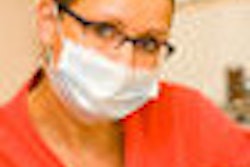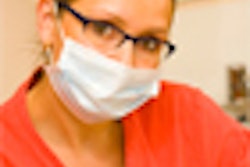
The third pilot program of the ADA's Community Dental Health Coordinator (CDHC) model is set to take flight, following an agreement between the ADA and Temple University in Philadelphia to conduct the first urban-based CDHC training.
— Amid Ismail, B.D.S., M.P.H., M.B.A.,
dean, Kornberg School of Dentistry
The other two CDHC pilot programs already under way include one being directed by the University of Oklahoma that is training CDHCs from rural areas, and a partnership between the University of California at Los Angeles and Salish Kootenai College in Montana that is training students from American Indian communities. In addition, Rio Salado Community College in Tempe, AZ, is supporting the program by providing the academic study portion online.
Temple began recruiting potential CDHC students after receiving the Pennsylvania State Dental Board's stamp of approval earlier this year, according to Amid Ismail, B.D.S., M.P.H., M.B.A., dean of the Kornberg School of Dentistry at Temple University and a key architect of the CDHC program. Only dental hygienists and expanded function dental assistants are eligible, he noted.
The ADA is funding the program, which will train six students each year at a cost of $300,000 per group. The first group of six students will begin their 18-month CDHC training next March, Dr. Ismail said. Upon graduation, they will work in community-based dental clinics in the urban areas in which they live or originate from.
|
Proposed CDHC services The Community Dental Health Coordinator is a member of the dental health team who works in communities where residents have limited access to dental care to improve their oral health. The CDHC provides a limited range of preventive dental care services, including screenings and fluoride treatments. The CDHC will also help patients navigate the health system and access care by a dentist or an appropriate clinic and engage in educational activities to improve community members' oral health habits. In the curriculum developed by the ADA over the past several years, CDHCs would be trained to provide the following services:
|
The urban-based setting poses some unique challenges, Dr. Ismail noted.
"In a rural setting, the problem is the distance," he said. "Here, distance is not a factor, but the diversity and heterogeneity of the population is. Our community outreach has to have a lot more counter competencies."
Members of the community
Placing CDHC trainees in their own communities is thus critical to the success of the program, he emphasized.
"Our aim is to ensure that the coordinator is able to bridge the gap between local cultures and health care systems," Dr. Ismail said. "The CDHC can help improve people's oral health habits and help patients navigate the social and bureaucratic barriers that prevent them from gaining access to available dental health services."
Although results of the initial CDHC pilot programs have not yet been quantified or reported in the literature, studies of the community health worker (CHW) model indicate that they can make significant contributions to a community, the ADA said. As defined by the U.S. Department of Health and Human Services, CHWs are community-based individuals who work in association with the local health care system in both urban and rural environments and usually share ethnicity, language, socioeconomic status, and life experiences with the community members they serve.
Because the CDHC will function much like a CHW, the ADA believes that CDHCs will have a similar positive impact on the oral health of their communities through education and outreach.
"If there were CDHCs in the community where Deamonte Driver had lived who understood the environment where he lived, his death may have been averted," Dr. Ismail wrote in the Pennsylvania Dental Journal earlier this year (Jan-Feb 2009, Vol. 76:1, pp. 27-29). "Deamonte Driver would have been classified as an 'emergency patient' and the CDHC, using a laptop computer that is connected to a web-accessible database, could have scheduled Deamonte Driver to see the CDHC's supervising dentist within hours. Moreover, the CDHC would have explained to his caregivers the seriousness of his condition."
While there are still concerns in some circles about whether such midlevel provider models are the best way to improve access to oral health care, Dr. Ismail emphasizes that the CDHC model was not designed to compete with members of the dental team who work in well-served areas, nor does it replace dental hygienists or assistants working in private practices. The CDHCs will be restricted to work only in underserved areas where community dental clinics are located, he noted.
In the long run, he said, the CDHC model is only one of the many solutions needed to improve access to dental care. "The reality is that we have to address the problem of access, so we need to look at this from different perspectives and come up with many ideas," Dr. Ismail said. "This is not just about going to the dentist; it is about changing cultural norms, community norms, anxieties, cost of care, and more. It is a complex phenomenon that we tend to oversimplify."
Copyright © 2009 DrBicuspid.com



















